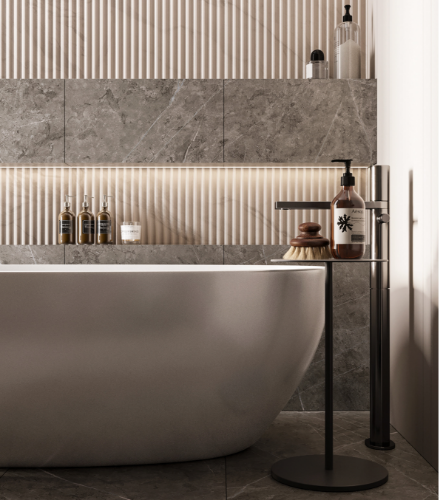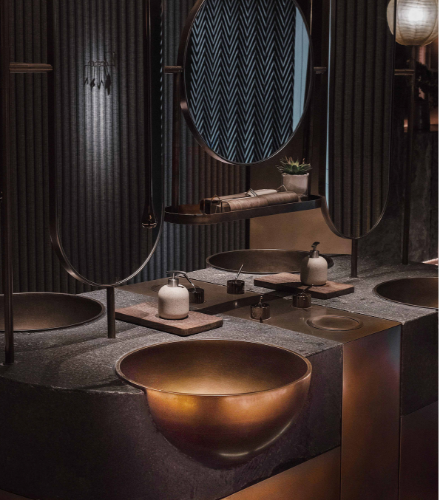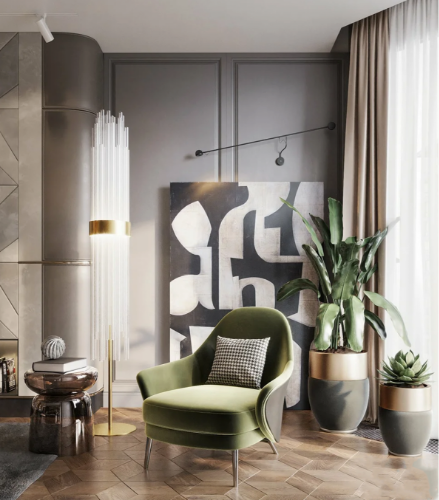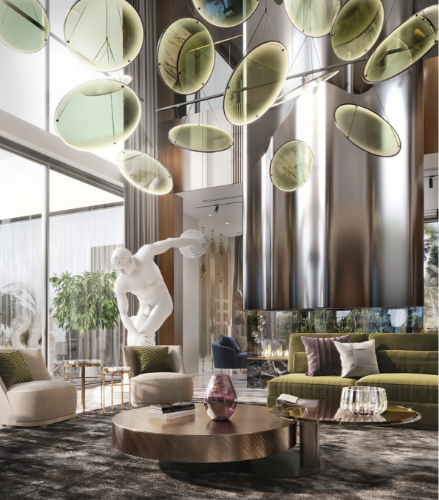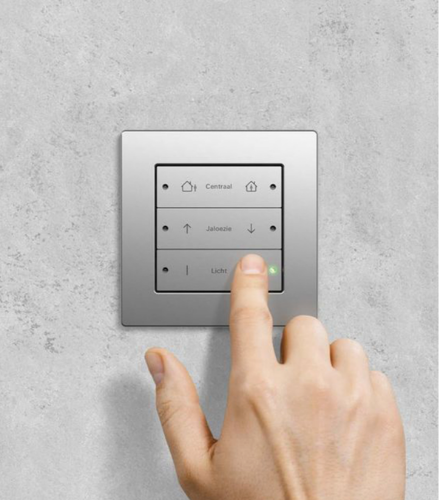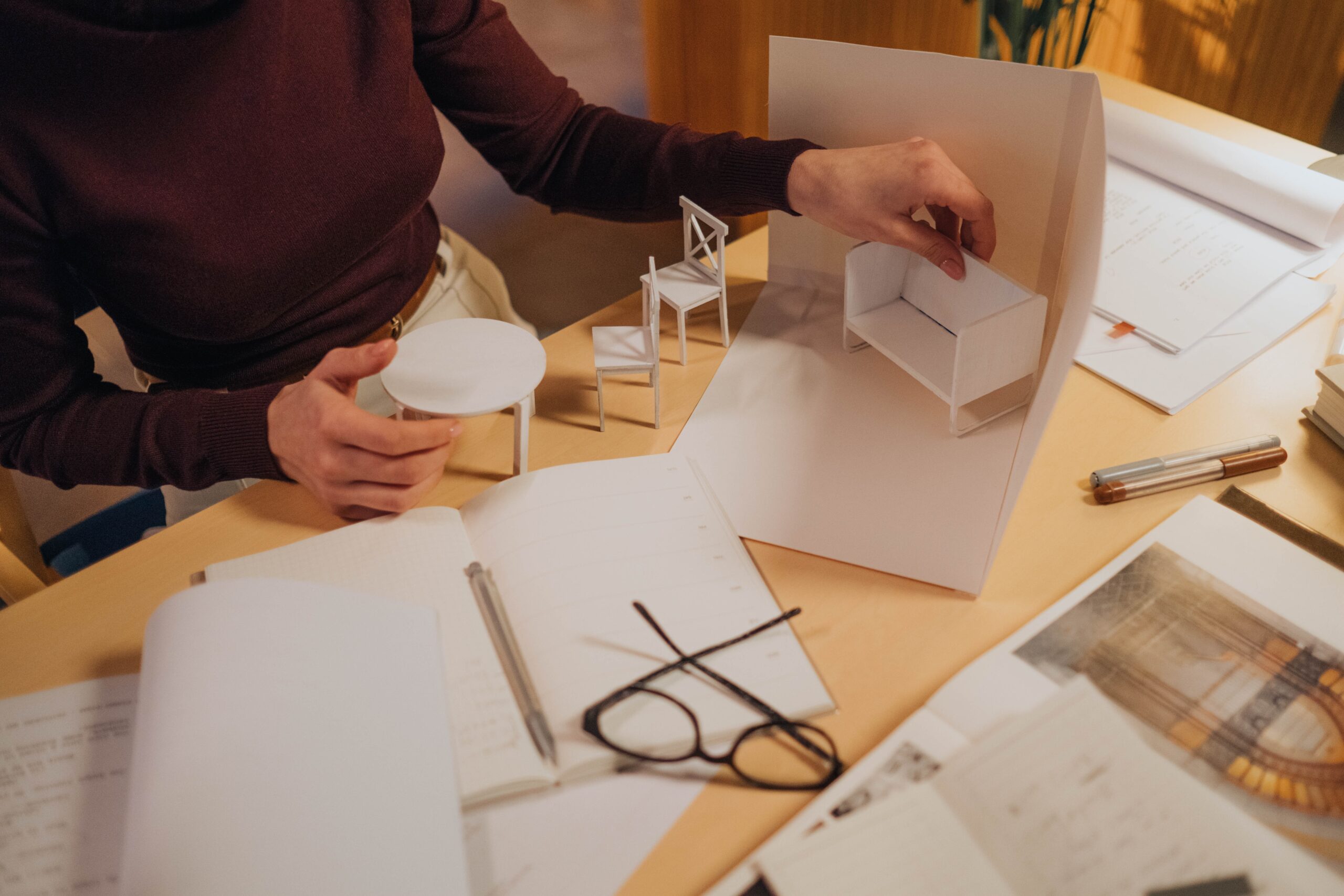The basic function of the furniture is to accommodate comfort. But often with a lack of arrangement, these pieces of furniture can act as a disability for any space. Furniture layout seeks to solve this issue by systematically arranging the furniture to get the most out of the space. While a lacklustre furniture layout doesn’t make a home unlivable, it will definitely make the home look cluttered and incoherent along with making your life a lot more difficult. Lucky for you, this blog will be your guide to finding the balance between furniture layout and interior design.
The Basics of Furniture Layout
To put it simply, furniture layout is the arrangement and positioning of furniture in a space to create a functional, comfortable and visually appealing space. The perfect furniture layout involves factors such as the size and shape of the room, the expected function of the space and the aesthetic goals of the design. Getting the furniture layout right is much more important than most people realise, it can impact the flow of traffic through the room and affect the overall mood and atmosphere of the space.
The principle of furniture layout or more commonly known as “The Art Principles” are a set of guidelines that offer an opportunity to express individuality and meet family needs, whether it’s placing furniture, arranging accessories or setting the table. The greatest design professionals have a natural sense of arrangement and use art principles instinctively. However, if you lack the same instinct, we have got your back. Here are the art principles, so you can integrate them into your home’s interior design.
- Balance: The first principle is balance, which induces a sense of stability. The best way for achieving stability in a space is by grouping the form, colour and textures as a focal point that permeates equal attraction on all sides. Furthermore, there are two types of balance – formal and informal balance, also known as the symmetrical and asymmetrical or occult balance that utilises opposing weights and distances to create balance.
- Emphasis: The principle of “Emphasis” calls for a focus on the most important aspect of the space and everything in the space should be arranged in the order of their importance. To perfect the principle of emphasis, place or group your furniture, use a contrast of lines, colours, light, textures or shapes and integrate plain background space around your furniture.
- Rhythm: This principle promotes the flow of energy and traffic in a space, it can also be translated as creating a visual pathway for the best aesthetics. To achieve rhythm in a space, you should use repetition of lines, shapes, sizes, colours, textures or patterns; you can also use a progression of sizes and transitional lines.
- Proportion: The principle of proportion promotes the harmonious balance between size and scale within the composition (furniture and space as a whole). It helps create a sense of unity and coherence within a space, the proper integration of this principle can create compositions that are visually pleasing and harmonious.
- Unity: The final principle refers to the perfect amalgamation of all the previous principles, giving birth to a space that induces a sense of oneness or harmony within the space. It also requires sizes, shapes, colours and ideas to be cohesive and related to each other. In other words, there should be a similarity along with variety in the space.
Also Read: Creating a Minimalist Home: Tips for Simplifying Your Space
Tips For Selecting The Right Furniture
With so many options in the market, choosing the right furniture for your home can be hard, to say the least. Here are a few tips to help you select the right options for your home.
1. Size of The Room
The foremost thing you should consider is the available space in your home. This doesn’t just affect bigger pieces of furniture but also small ones. For instance, a small coffee table would always look out of place in a spacious living room, meanwhile, a large sofa in a small living room will take up most of the space and may make the room look overcrowded. Furniture should always be bought according to the space to balance proportions and clear the hurdles for traffic flow.
2. Function of the Room
This one is pretty easy to understand and many would say, it’s common sense. You wouldn’t buy an armchair for your kitchen right, it might look good there, but it’s best suited for your living room or bedroom.
3. Get Furniture According to Your Personality
It’s your home, so the furniture that goes into your home should be a reflection of your personality, preferences and style. Don’t fall for the hype on the internet, they change every three months. Whereas most homes and home interiors are permanent and you might grow out of the latest trendy furniture, so it’s best to stick to your style.
4. Prioritise Comfort & Quality
While stylish furniture can level up the aesthetical appeal of a space, it also tends to take up more space than it requires. And the intricate designs may sometimes make them quite uncomfortable or unfeasible for a home. So, prioritise your comfort and quality more than anything else, it will last longer and keep you comfortable.
5. Don’t Overcrowd the Space
Moderation is vital when it comes to furniture because it’s pretty easy to go overboard with furniture. As stated before, the enormity of the choices makes sticking to the right amount even harder. It’s better to create a plan or list beforehand, so as not to make on-the-spot decisions.
Also Read: Best Accent Wall Design Ideas to Dress up a Naked Wall
How Furniture Layout Can Affect the Look and Feel of a Room
Assuming, you understand the basics of furniture layout, let’s take a deep dive into how furniture layout can affect the look and feel of a room. Regardless of what design style you integrate into your space, the furniture layout can dramatically affect the overall vibe of the room. While an open furniture layout in the living room can make the area feel welcoming, an intimate and closed layout for your bedroom can help you relax, it completely depends upon the specific layout you choose for the space. Let’s look at some examples that perfectly describe it.
This living room furniture layout perfectly showcases how to make a room feel airy and spacious without it being especially large. It’s because of the clear pathway that allows for free movement through the room. Also, there are zero hurdles to any of the features of the space, including the window, the fireplace or either exit of the room.
The arrangement of furniture in the room makes it evident that the space is intended to be used as a living room, as the coffee table is positioned at the centre and other pieces of furniture are directed towards it. This is one of the easiest approaches to establishing a furniture layout that follows all the previously stated “The Art Principles”.
Also Read: The Best Console Table Design Ideas and How to Decorate Them
Tips for Arranging Furniture in Different Types of Rooms
No home is really a home with some sort of furniture in them, from the bathroom to the home’s balcony every room features a variety of furniture that enhances both your comfort and functionality. However, each room is different and requires a slightly different furniture layout. As we have showcased a layout for the living room above, we will demonstrate a furniture layout for the bedroom as well.
Bedroom
A bedroom is a very intimate area of your home, far away from your guest’s view but creating a nurturing and cosy decor is still a priority. To establish such decor follow these tips:
- Always make space on either side of the bed as you will be getting in and off the bed every day. Keeping the space around the bed free of any other furniture will improve the flow of traffic and maintain safety.
- Keep storage racks or any other wall decor far away from the bed.
- Make your bed the focal point of the room as the bedroom is called the “Bed” room for a reason. This creates a cohesive design, and the best way of doing this is by turning the bedside wall into an accent wall.
Also Read: 3 Most Popular Living Room Wall Colour Combinations of 2023
To sum up – The impact of a furniture layout is far greater than most people realise, hopefully, this blog helps you establish the right furniture layout in your home. Making sure you understand the fundamentals of arranging furniture and applying the aforementioned tips, can assist you in achieving a successful layout.





